Legend of the four jacks
The ritual
One of the typical rituals of pilgrims arriving to Compostela is to lean out of the balustrade of the Obradoiro square to see from above the Church of St. Fructuosus, where the Spanish deck of cards was born.
The legend
It is said that in 1754 the architect Lucas Ferro Caaveiro was designing the temple's dome with the figures of the four cardinal virtues: fortitude, prudence, justice and temperance.
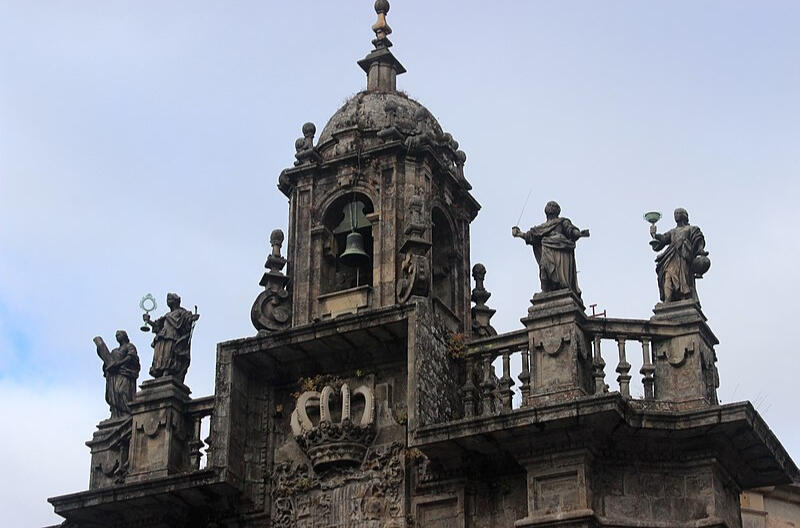
One day the architect received a visit from a friar friend of his. He was indignant because of the vice of a game with geometric drawings that was spreading like a plague throughout the city.
—This is a scandal! There are people everywhere playing with profane pictures like these: they call them cards and it is obvious that it is the work of the infidel.
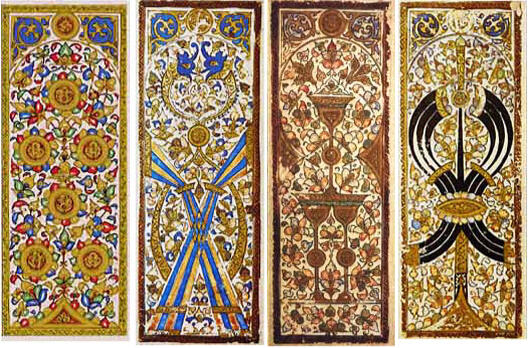
—Leave me those little cards —said Lucas— I will make others, but with human figures, which is not allowed by the religion of Mohammed. Thus, the infidels will not be able to play with them and they will also carry the symbols of the Christian virtues to propagate our faith.
Symbols
In many works of art, the cardinal virtues were traditionally represented with symbolic elements:
FORTITUDE
It consists of overcoming fear and fleeing from recklessness.Symbology: club
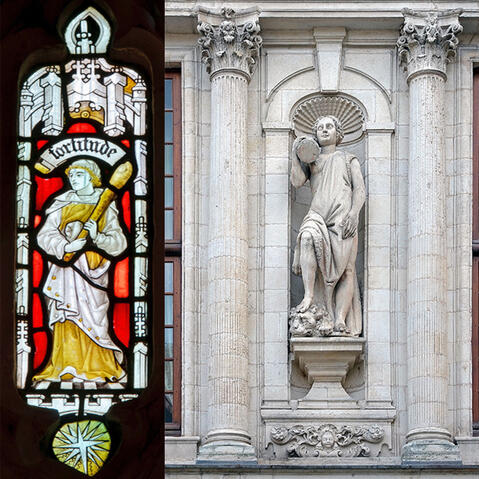
PRUDENCE
It consists of acting in a respectful and empathetic way.Symbology: mirror
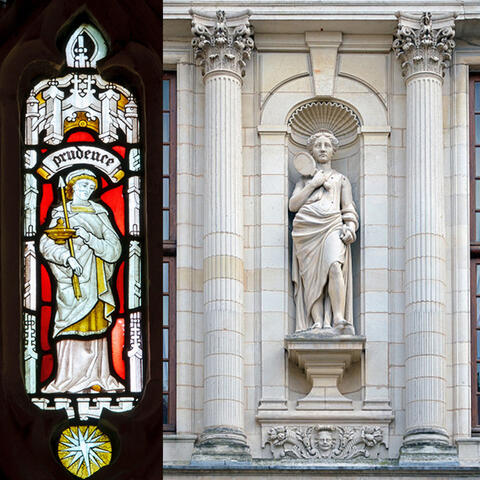
JUSTICE
It consists of remaining impartial with respect to others.Symbology: sword

TEMPERANCE
It consists of moderating oneself in the attraction of pleasures.Symbology: cup
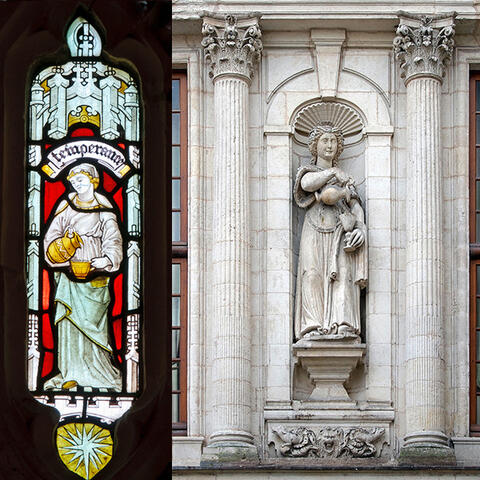
The redesign
Legend has it that Lucas Ferro turn around one of the sketches of the dome he was working on and on its reverse side he improvised the entire collection of engravings with the images he had in his head.
The new design was an immediate success because it was much more intuitive than those of the Muslim deck of cards and its drawings represented models of virtuous conduct to act according to the Christian faith.
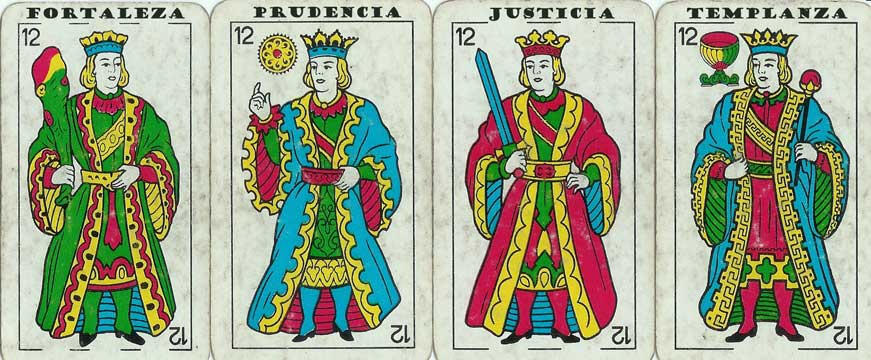
But the players soon forgot the religious significance and other explanations appeared.
The tavern keeper's interpretation
For example, the tavernkeepers related the symbolism of the suits of the deck by showing the four most common objects they had on hand:
—These drawings represent my tavern:
Cups are where we serve the good wine.

Swords are those of gentlemen who drink good wine.

Coins is the currency in which good wine is paid for.

And the clubs are...
the stick in case a gentleman does not pay for the good wine.

The European transformation
The Spanish deck was known throughout the world thanks to the pilgrims returning home.
When artisans from different countries reproduced the designs by stylizing the suits, they gave rise to what is known today as the French deck.

The oblivion
Over time the symbolism of the four cardinal virtues was forgotten both in the cards and in the dome of St. Fructuosus, which is still popularly known today as the church of the four jacks.
Many families in Compostela keep this legend alive in their memories thanks to the oral tradition that has been passed down for generations.
If you do not want it to be lost in oblivion, share it with visitors every time you get closer to the balustrade of the Obradoiro square.